Dashabhuja and Religious Symbolism
Goddess Durga was created by all the gods to end the destructive havoc created by demon Mahishasura.
Total Views |
".. अयि मयि दीन दयालुतया कृपयैव त्वया भवितव्यमुमे
अयि जगतो जननी कृपयासि यथासि तथानुमितासिरते ।
यदुचितमत्र भवत्युररीकुरुतादुरुतापमपाकुरुते
जय जय हे महिषासुरमर्दिनि रम्यकपर्दिनि शैलसुते " ॥ २१ ॥
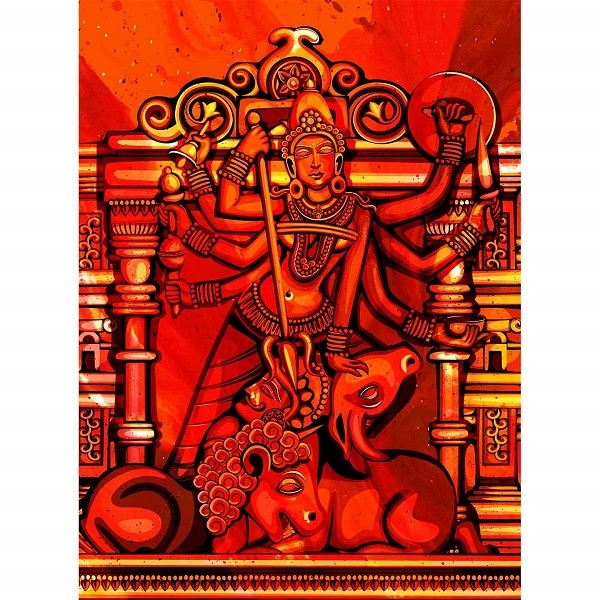
Goddess Durga was created by all the gods to end the destructive havoc created by demon Mahishasura. Therefore, all the gods have contributed in some or the other way in her creation. Her birth is explained with an incident when sparkling rays emerged out of the universe and the goddess appeared with all her glory, which is why she is called the goddess of the universe. All the elements of the universe, aMll the gods and all the powers had come together for the creation of the goddess and strong and positive power was generated. The Indian mythology is filled with such stories which strongly reflect symbolism and metaphors.
In fact, since the Vedas are all poetic verses, they strongly resemble poetic devices of similies and metaphors. But unfortunately, we fail in the interpretation of of our own stories. Compilation of the myths is one thing but if the process of interpretation goes wrong then the whole point of the stories is wrecked. Our Puranic stories as well as vedas are sources of the history of Indian land.
They provide information of all kinds like geographic, social, environmental, scientific but not directly. Therefore, while reading these texts of immense significance it is important to understand the stories with the coreect perspective. It is important to understand the symbolism that reflects from the stories and stotras.
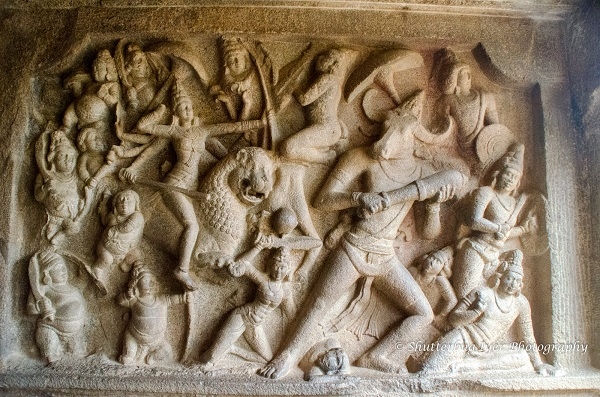
Goddess Durga is worshiped in different forms around the country. At some places she is worshipped as Ashtabhuja, or the one with eight hands but it is observed that the Dashbhuja form of the goddess is worshiped in most of the regional cultures. Now while interpreting this form of the goddess, people often lack to induce even slightest of insight and claim that the stories are baseless and impractical.
However, the information coded in the form of these texts and the moral values expected to be transmitted from the stories often go neglected. The story of Durga's birth and the assassination of demon Mahishasura says that the goddess was gifted weapons from various gods to kill the asura. Let us understand the symbolism that lies vehind the ten weapons that the goddess holds in her hands, which resemble her power.
Vishnu's Sudarshan Chakra
It is not necessary that every idol would show the goddess holding the same ten weapons. But these are the ones largely observed in sculptures and mentioned in stories. The demon Mahishasura was blessed by Lord Brahma that no man or god in the universe could kill him as he had pleased Brahma with his penance. Mahishasura was confident that there couldn't be a woman or goddess who would be capable of killing a huge beast like him, which is why he himself had demanded such a boon.
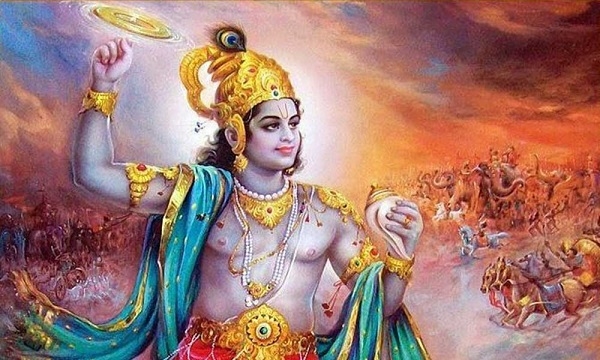
When the gods had gathered together to take a decision about the devastation caused by the asura, even Vishnu was convinced that there was no woman or goddess in the three worlds who could kill him. And a goddess is the only one who could end the demon according to the boon. So when it was decided that all the gods will unite their powers to create the goddess for the purpose of the triumph over evil, everyone decided to gift Durga the most powerful weapon they have. Vishnu offer the goddess his Sudarshan Chakra.
There are many implications of the weapon. It is the most powerful weapon found in Indian mythology which once released cannot be stopped by any power. More importantly the chakra is not used like other ordinary weapons but it functions merely on the will of the god who holds it. Various Puranas have varied stories where the chakra is used by Vishnu or any of his avatar to kill asuras or to liberate someone from bondages. Thus, symbolically the Sudarshan Chakra represents determined end of the evil and liberation of souls.
Varuna's Shankha or Conch
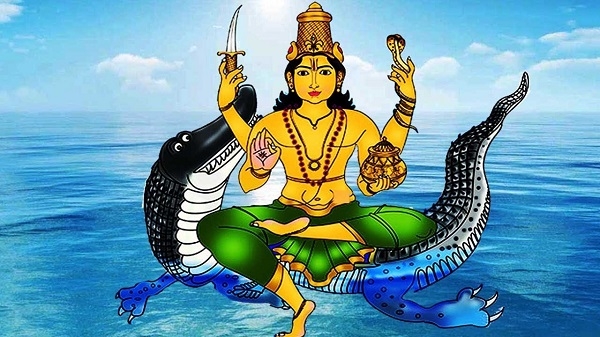
The goddess holds shankha or conch in one of her hands, which was given to her by the god of sea Varuna. The shankha is horned before starting any battle as we have seen in the Mahabharata as well. The Shankha although isn't a weapon but is important for any warrior as it resembles the declaration of a conflict.
But that is not it, it also resembles the victory of Devas or good over evil as it is also horned by the Devas after their victory in any of the battles. So the conch also resembles the triumph of good over evil. In daily practice Hindus blow the Shankha for every auspicious occasion as it is believed that the positive sound of 'Aum' is produced out of it. The shankha is sacred in Hindu dharma as it was produced from the Samudra Manthan which took place between the devas and asuras.
Shiva's Trishul and Snake
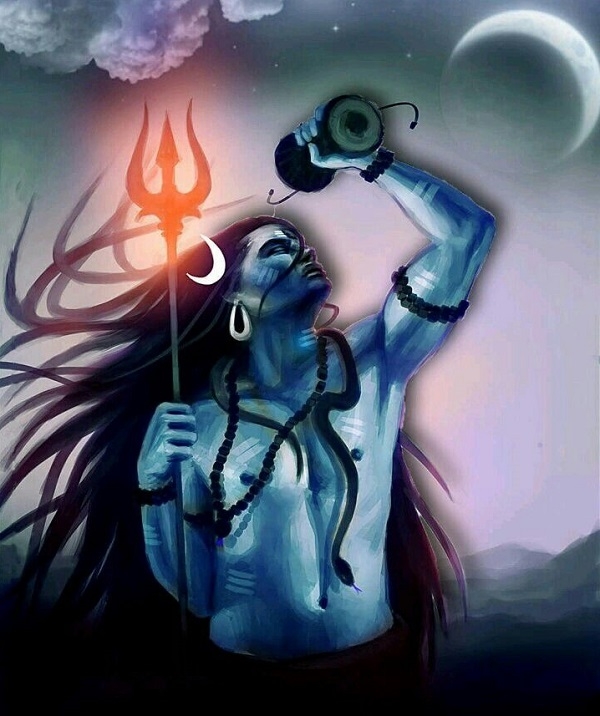
Mahadev, known as the destroyer of the universe, bestowed the goddess with his Trishul and Snake. Just as the mysterious god Shiva, everything that relates to Shiva has varied significance. There are a lot of things that a Trishul resembles. It resembles Teen Lok or even three qualities or gunas of humans of Rajas, Tamas and Satva.
Largely, the trishul is a representation of time with the three spikes referring to the past, present and the future. Therefore, out of all the weapons when the goddess kills the demon with the Trishul, it represents that time itself is going to eliminate the evil from this world. A snake is a very smart animal. Therefore in Indian myths a snake represents consciousness. Therefore in the form of a snake, Shiva blesses the goddess with consciousness.
Brahma's Lotus and Kamandalam
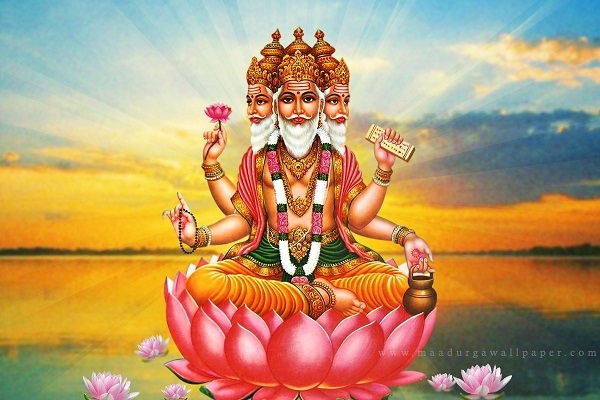
Unlike how it is usually observed, the lotus that the goddess holds in one of her hands is not just there to represent her femininity. But the flower was given to Durga by Lord Brahma as it symbolizes love for wisdom and knowledge. The goddess was blessed with all the qualities and the quality of wisdom was blessed by Lord Brahma, who is known to the creator of the universe.
Along with the lotus, he also gave the goddess a Kamandalam which is a jar like object that the goddess holds. The Kamandalam is believed to hold holy water. That too represents knowledge and wisdom. Therefore, altogether the blessings of Brahmadeva to Durga were a representation devotion and love. According to the relation of the two, with the stories they are used in, it can also be known that the two also symbolize surrender that the Goddess will show mercy and bless those who surrender for the bad deeds.
Indra's Vajra

Indradeva is the most important or influential god among the devas. He is associated with thunder and rainfall, precisely that is the main reason why he is given immense importance in Hindu dharma. The god gives Durga his vajra or thunderbolt. The Vajra implicates determination and supreme power. When Indra blesses the goddess with her Vajra he provides her with a determined and firm character and empowers her with strong confidence.
Vayu's Dhanush and Tir
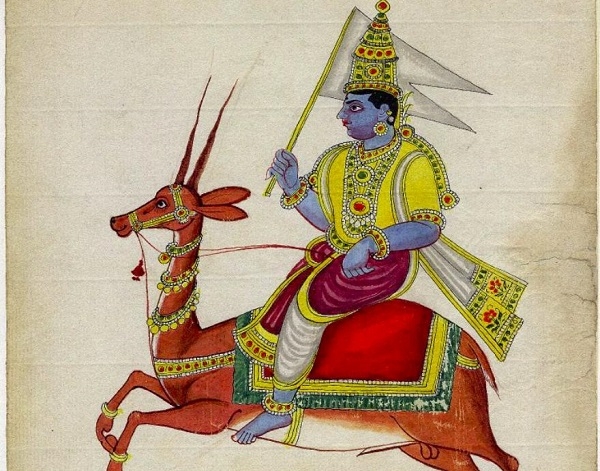
Vayu, the god of wind, blessed Durga with Dhanush and Tir. A Bow and an arrow is a weapon which is being used by Gods and Goddesses during wars. This combination of potential and kinetic powers symbolizes energy. The arrow represents focus and symbolizes dedication towards the aim. While the bow suggests that only with self potential cam the aim be achieved. Goddess Durga was blessed by the quality of dedication towards her aim which was to kill Mahishasura by Vayu Deva.
Agni's Spear
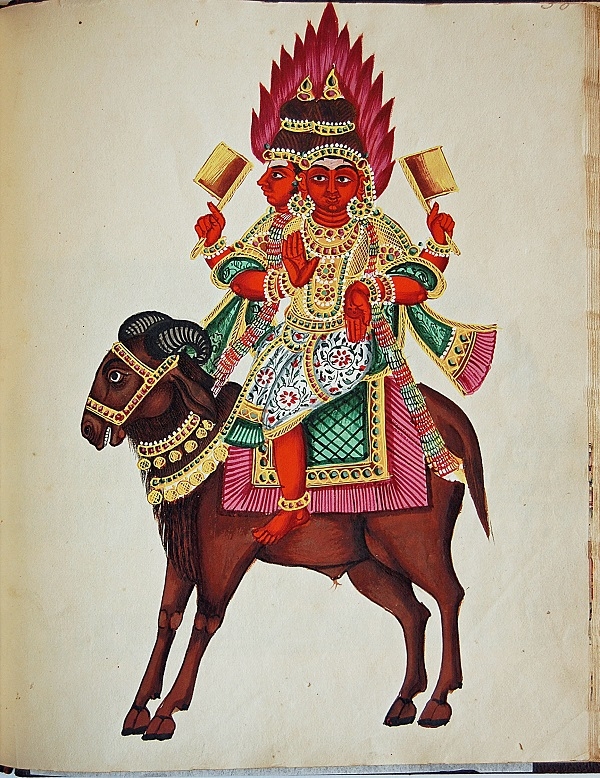
The spear that Durga holds was gifted to her by Agni Deva. The spear symbolizes auspiciousness. It has the power to destroy all the negativity and evil and bring auspiciousness in the world. Therefore, in the form of the spear, Agni had gifted Durga with the power to overcome obstacles at any cost.
Vishwakarma's Axe
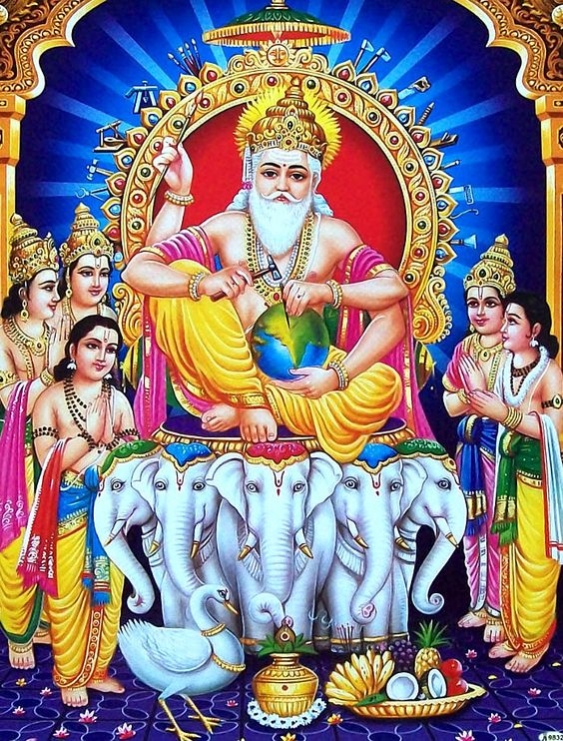
Vishwakarma, who is known as the god who has designed the universe, gifted Durga his axe. An axe is a sharp weapon which when raised against anything can only be stopped after the object is cut in two pieces. Using an axe is huge responsibility and one has to be responsible for the consequences before using it. Thus, when Vishwakarma gave his axe to the goddess, he gave her the courage to take responsibility of her acts. In some texts it is said that Parashurama was the one who gave his axe to Durga, however, the notion behind the act remains the same.
When we look at the Durga idol henceforth, let us understand the qualities that each of her weapon associate with in order to win over the evil. Let us understand the dharma and the symbolism that has created the philosophy of Bharatiya Tattvadnyan.
